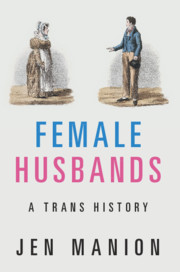Conclusion: Sex Trumps Gender
Published online by Cambridge University Press: 28 February 2020
Summary
Female husband was never a self-declared gender identification. The subjects of this book simply assumed the identity of “man” and the role of “husband.” Few others ever would have known they lived a portion of their lives as girls before becoming men. It was a designation reserved for those who lived their lives fully as men – often beginning in their teenage years – until some accident or incident led to a revelation of their complicated pasts. Female husbands left home and recreated their lives among strangers. Most were alone when they decided to trans gender, facing the daunting prospect of becoming a new person in a new place all at once, alone. For some, separation from family and friends was devastating. For others, this change and forced relocation meant freedom. Despite all of its attendant hardships, this path was not without privilege. Within the British Empire, settler colonialism, slavery, and war determined the conditions for and parameters of most peoples’ lives. Female husband narratives demonstrate a freedom, self-determination, and mobility that were hard to come by. In a way, they represent what Lisa Lowe describes as “the liberal affirmation of individualism, civility, mobility, and free enterprise” at the heart of modern liberalism. Female husbands were not simply disruptors of heteronormativity and sexual difference; they were empowered by and helped to stabilize liberalism, including the white supremacy that was embedded in the gender binary.
- Type
- Chapter
- Information
- Female HusbandsA Trans History, pp. 258 - 266Publisher: Cambridge University PressPrint publication year: 2020



